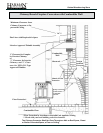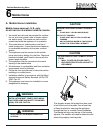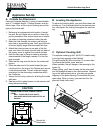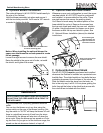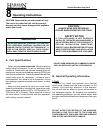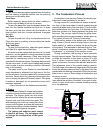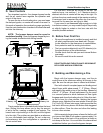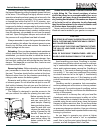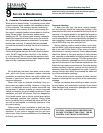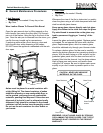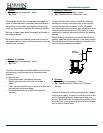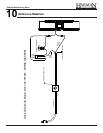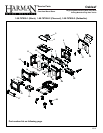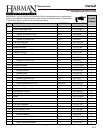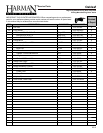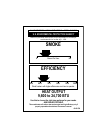
28
Dry Seasoned Wood Only! 3-90-798 Save These Instructions
When wood is burned slowly, it produces tar and other
organic vapors which combine with expelled moisture
to form creosote. The creosote vapors condense in
the relatively cool chimney ue of a slow burning re.
As a result, creosote residue accumulates on the ue
lining. When ignited, this creosote makes an ex-
tremely hot re. The chimney and chimney connector
should be inspected at least once every two months
during the heating season to determine if a creosote
buildup has occurred. If creosote has accumulated,
it should be removed to reduce the risk of a chimney
re.
Close the air
control and bypass damper and notify the re depart-
ment. Do NOT apply water to the re, in the rebox
or in the chimney. Do not operate the appliance until
the chimney and connector have been inspected and
approved by a chimney professional.
Do not burn any fuel other than wood, such as char-
coal, which can cause increased carbon monoxide
production or overring. Never use highly volatile sub-
stances in your stove, such as gasoline, which could
cause an explosion.
When solid fuels are burned completely, they pro-
duce water and carbon dioxide. However, in long slow
burns, a substantial amount of carbon monoxide may
be produced. If allowed to build up, carbon monoxide
(which is odorless) can prove fatally poisonous. Proper
ventilation and draft will prevent this from happening.
If you smell smoke, turn up the air control lever setting,
and thoroughly ventilate your dwelling. During future
burns, be careful not to overload the stove with fuel, so
you will not be tempted to constantly operate at a low
air control setting.
Other causes of poor ventilation or draft are icing,
exhaust fans, a blocked outside air inlet, and room air
starvation. If your stove is sluggish and you get occa-
sional odor, check these possibilities and increase the
air ow in your home.
At least once per year, the stove, venting connec-
tors and chimney should be thoroughly cleaned. If the
areas are found to have an excessive build up of ash or
creosote, it is recommended to increase the frequency
of the cleaning. This will extend the life of the appliance
and its components. A vacuum specically designed for
ash is preferred, however a standard shop-style vacuum
with a HEPA lter may also work just ne.
During cleaning, caution must be taken not to dam-
age the white / gray colored ceramic combustion pack-
age in the rear of the rebox. When using a brush in
the chimney or venting connector, the by-pass damper
should be placed in the open position to help prevent
ash, creosote or other debris from falling down onto and
around the combustion package. This also protects the
top of the combustion package from tool or brush dam-
age and diverts most of the removed materials into the
rebox for easy clean-up and removal. Once the venting
system has been cleaned, remove the rst section of
connector pipe from the appliance ue collar. Carefully
vacuum the ash and debris from around the sides and
top of the combustion package.
The shoe brick must be removed to allow vacuum
access for cleaning the front portion of the combustion
package.
Always use caution when refueling or when vacuum-
ing the rebox and combustion package. Some users
have damaged their combustion package with vacuum
cleaner tools, and re pokers.



